Exhibition organised to raise money for

Sponsored by

Archive Home Page
Previous Exhibition Following Exhibition
St. Margaret's Hall, Coniston Road, Hatherley, Cheltenham, GL51 3NU
Exhibition organised to raise money for |  | Sponsored by |  |
Descriptions are based on material supplied by the layout owners
Abercynon Shed The layout represents a South Wales steam depot in the late British Railways 1950's period that is close to working collieries. The shed is a much shortened version of the original Abercynon. It is to 4mm EM gauge, controlled by NCE DCC system using converted ready to run stock. Size is 1.6 metres by 0.46 metres. | 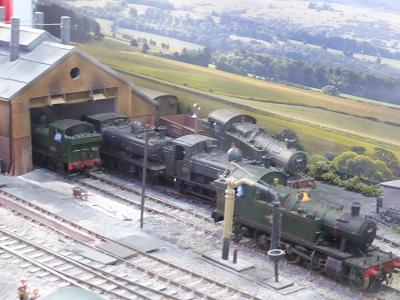 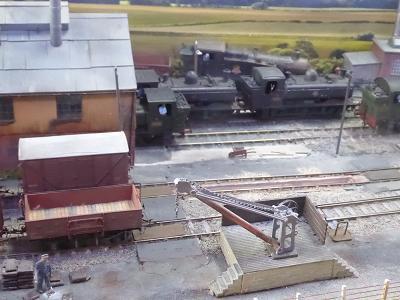 | |
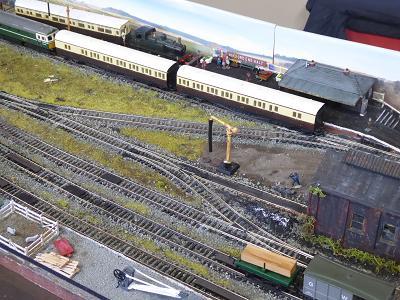 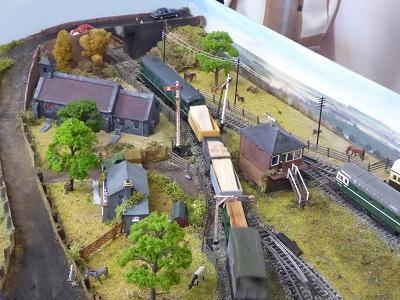 |
This is a fictitious line in the Cotswolds around the 1950âs and 1960âs on the Western Region. Part of this layout was built 40 plus years ago by my father.
I received it in 2019 as a Christmas present from my Grandfather who got it working for me. When I started working on it, it was only track, bridge and a platform. There are details such as a river, discontinues line with workshops in the arches, a farm and hand painted backgrounds. This layout has been exhibited multiple times. | |
Bagley Bagley is a real location in Somerset, however the layout depicted here is completely fictitious and is not meant to resemble the actual place. The terminus station has a single platform with run round loop and is set in the 1950's to early 1960's. The former goods shed has been demolished owing to increased competition from road haulage. The land from the goods shed area has been sold off to a private fabrication and wagon repair company. Rail traffic is rather busy as the terminus is used to reverse trains to be able to access a junction a half mile beyond the road bridge. Mineral and varied goods trains can be seen along with the local passenger service. Motive power on the line is a mixture of ex London Midland Scottish, Great Western Railway and the new British Rail standard class locomotives. Also the odd green diesel can make an appearance. | 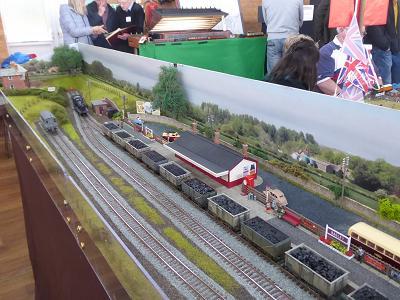 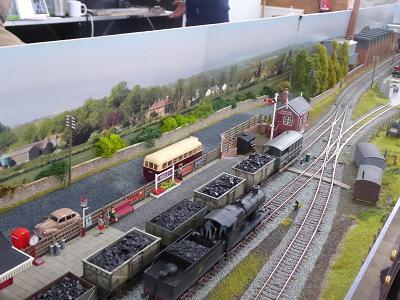 | |
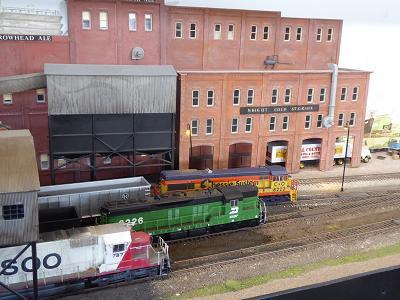 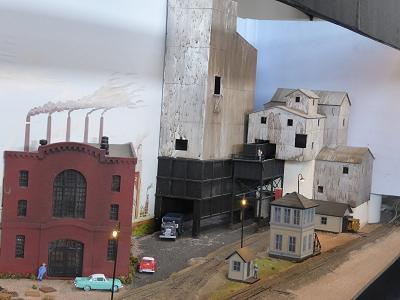 |
Empty wagons arrive from the east get loaded with coal and head back east. Set circa 1971, countless bankruptcies, mergers and take overs have resulted in many mixed liveries and locomotives away from their home turf. A modellers dream scenario which has allowed me to run what I like. I hope you enjoy it too? | |
Lammas Lane Lammas Lane depicts a small fictional section of the London Underground network set in the late 1990's and is modelled in N gauge. I acquired the layout in 2017 and made various modifications including adding conductor rail and line side cabling to set the location and chosen era that I grew up in. The street above the layout represents a bustling high street with the entrance to the station and the ends of the platforms at the left of the scene. Though there us some RTR rolling stock, the majority is made from kits or modified in someway. A selection of both tube and subsurface stock from across the London Underground network can be seen on the layout, as well as "Steam on the Met" heritage trains. The running line consists of a single track with a passing loop and is operated by an analogue controller. Points are controlled by rods and small working signal was modified and fitted to control trains entering the single track section. | 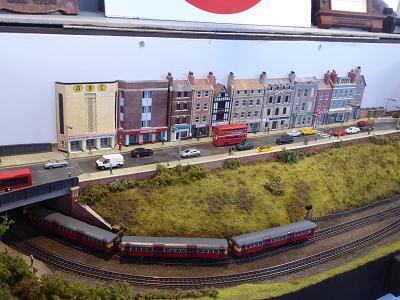  | |
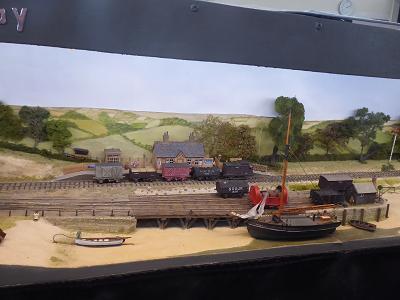 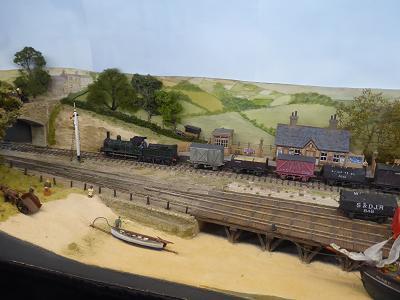 |
This cameo style layout was designed to fit in a carrying box 700mm long, 300mm wide and 240mm deep. It is situated in the area around North Devon or Cornwall and takes its inspiration from Lelant and its associated quay sidings on the St Ives branch. The old quay in the centre of Newquay Harbour. Plus Fremington Quay on the extension of the old North Devon Railway. It features a quay on wooden trestles tied up to which is a West Country smack. The sandy estuary has a small creek running under a timber bridge and passing nearby Lime kilns. A small station serves the area. The track features mixed gauges of the old 7 foot Broad gauge and Standard gauge. The period is from the late 1870's until the end of the broad gauge in 1892. Traffic includes both broad gauge and standard gauge passenger, freight and fish trains. | |
Orchard Road TMD WEBSITE Orchard Road TMD is a DCC operated British Rail depot layout, based in the BR (Southern) region between 1975 and 1983 and features locomotives seen in Devon during these years. A depot has been modelled in a relatively small space, but includes a maintenance building, locomotive refuelling and fuel off-loading siding with storage tanks. The odd siding has been provided through the bridge, forming the scenic break, this represents the end of a track from the station beyond the bridge. All track is Peco 00 gauge, ballasted and then weathered to represent the track that would be seen at a diesel depot. The major structures are scratch built, but some buildings are kits. The majority of the details are kits, plastic, whitemetal and etched-brass, all have been painted and weathered. Operation is DCC, using a NCE Powercab controller, with the points also being DCC operated via an accessory decoder. The locomotives are a mixture of Bachmann, Hornby and Lima and represent those classes that would have been seen in Devon. All have been weathered and one or two are sound fitted (this will be added to over a period of time). Construction of the layout can be followed on the RMWeb layout thread web site www.rmweb.co.uk � layout thread, search for 'Orchard Road TMD'. This a vast website covering all aspects of modelling and well worth a look at. | 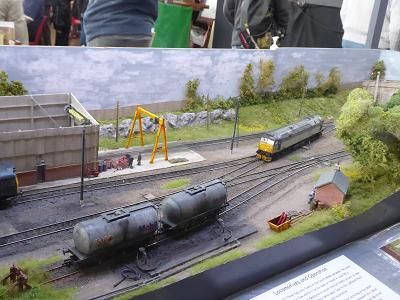 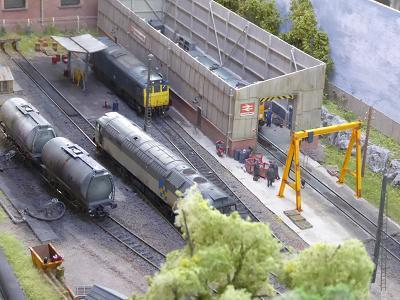 | |
 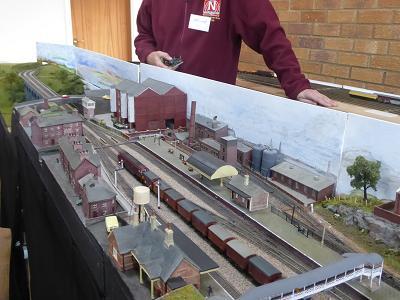 |
The layout has been built to an agreed modular standard and can form part of a large impressive model railway. Otterhampton is a DCC layout. Based somewhere in the Western Region at a fictional location, although some elements are inspired by real locations in the West of England. It is a two track main line with a small station on the passing loops. The object was to build a high quality layout in N gauge. The buildings are mostly kit bashed or scratch built or a combination of the two. Signalling is scratch built in brass and fully working. | |
Oxford Road Oxford Road is a fictitious setting somewhere in West London in the period mid 1980s to early 1990s. The layout contains a small depot, fuelling point, engineers siding and short platform which sees a sporadic service of garishly painted Network South East first generation DMUs. The Bakerloo Line runs on a lower level beneath it and has its own separate station. The layout uses Peco code 100 track and is DCC equipped using an NCE Powercab system. Structures on the layout are a mixture of card and plastic kits and scratch built. Rolling stock is a mixture of Bachmann, Hornby, Lima and Heljan with some extra detail added. The layout was not actually built to exhibit so may occasionally need a little poke to keep everything moving! | 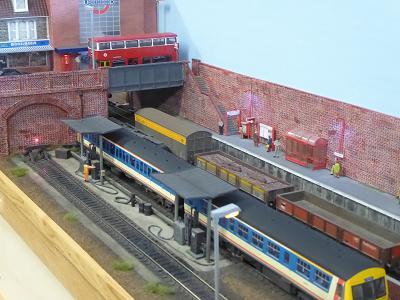 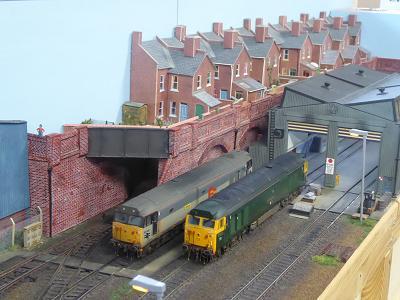 | |
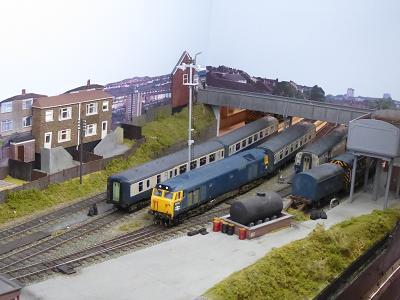 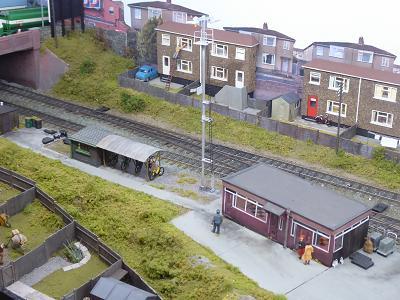 |
Parsons Vale represents a BR(W) carriage sidings in the late 1970s, the layout is firmly inspired by the Malago Vale carriage sidings adjacent to Parsons Street station in Bristol. The sidings were used for the stabling, cleaning and servicing of coaches and travelling post office stock, with a number of shunting moves during the day taking stock to and from Temple Meads station. Many of the real structures at Malago Vale are replicated on the model and selective compression has been used to recreate the cramped nature of the sidings which were surrounded by housing although space constraints have meant the Bristol to Exeter mainline is not modelled. Carriage sidings are rarely modelled due to the length of layout required and the relative lack of operational movement, but through using the footbridge as scenic break, the scenic area of the layout is less than 5 long. While the majority of stock movements are coaches, parcels and motorail stock a lack of road access to the site meant that all waste was taken away on 2 specially converted Lowmac wagons while fuel oil for the train heating boiler is also delivered by rail, adding operational interest. | |
Red River Set in the coal-mining region of the Appalachians the layout represents scenes from the last decade or so on what is now the Norfolk Southern (NS) railroad. The NS was the result of a merger between the Norfolk and Western and Southern railroads. The Southern was noted for the efficiency of its operations and the N&W for its coal hauling. The mine on the upper level is typical of an older type of unit during the last days of its life loading bottom discharge hopper cars bound for the few industries that still need this type of unloading. The cars are taken from the mine and eventually reach an interchange with the main tracks on the lower level. On the lower level can be seen the modern unit coal trains which need rotary tipplers to empty them as they do not have doors on the bottom. These cars run in long block trains from the mines to the power stations or other big users. Others trains to be seen include wood chips in very large gondolas,roadrailers, manifests (mixed), intermodaT and MoW (engineers) trains. Red River featured in the January and February 2005 editions of 'Continental Modeller' and has been shown at Banbury (NScaleUK), Lydney, Ross (NMRA), Chippenham (Trainwest), Caine, Andover (Modelex 2005), Rhondda (S. Wales Model Show), Cheltenham, Abingdon, Alton, TOlworth, High Wycombe, Warley (NEC), Rail-Ex Southwest (Taunton), Derby and Truro (Three Spires Railex). | 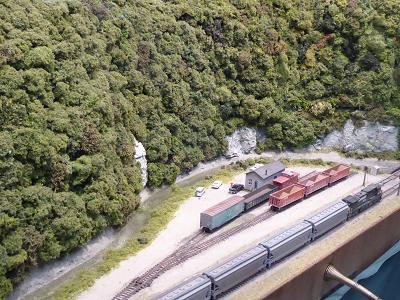 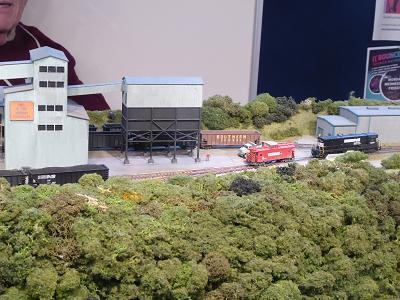 | |
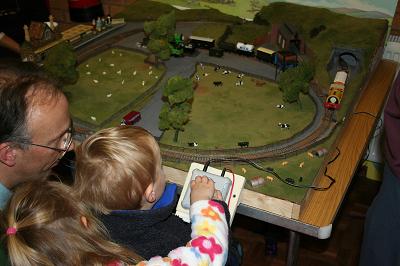 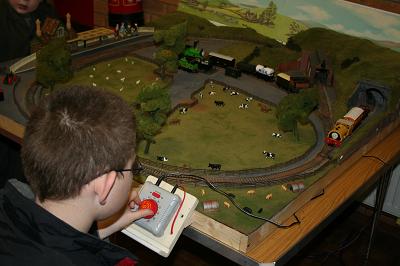 |
We would like to thank Trevor Hallam for looking after the Thomas Layout for many years at our exhibitions and also for refurbishing it at his expense. Unfortunately because of ill health Trevor is no longer able to continue so it was decided to offer Thomas free of charge to Hucclecote Railway Modellers on condition they bring it to all of our future exhibitions. This is the model railway where Children can become Engine Drivers on the Island of Sodor and has of course been inspired by the Reverend Audrey books. Our Thomas and Friends layout has been built for ten years now and in that time we hope it has encouraged many new railway enthusiasts to build a train set of their own. Originally it was intended as a space filler at shows so needed to be small, easy to transport and have a simple track plan, easy for small children to operate. After its first appearance it was clear this model railway would have to be included at all our exhibitions. It incorporates a tunnel, station, level crossing together with locomotive and goods facilities. Train drivers should look out for many of the popular characters; Henry, Percy, Toby, Cranky, the Troublesome Trucks, not forgetting the Sir Topham Hatt better known as the Fat Controller. The famous anthropomorphised rolling stock is mostly from the Thomas range and we are sure most of the adults and all the kids will love it. Happy Driving, but please observe the track speed limits. | |
Virginstow 2 In 1865 a branch line was opened from Plymouth to Launceston, by 1886 a new line has been constructed by the North Cornwall Railway from Halwill to Launceston, as the first part of their line to Padstow. The two lines remained separate until they were linked at Launceston in 1943, during the Second World War. This layout assumes that a short branch line was built off the North Cornwall railway into Virginstow, a small village lying just north of Launceston. The model depicts the terminus station in Virginstow in the mid 1950's to early 1960's, when most main line passenger services were operated through to Plymouth, via Lifton by the Western Region, and some to Exeter via Okehampton by the Southern Region. Freight traffic movements were of the type expected for a predominantly agricultural area. These include milk and perishables, whilst incoming are mainly comprised of coal, fertilisers and animal foodstuffs. The layout was originally built by Malcolm Diodge in the mid 1990's. The location of Virginstow was chosen to run stock typical of what might have been seen at Launceston, but in a single rail small terminus station. The layout was later sold on to Don Dickson, a fellow member of the "Three Towns" model railway group. Don exhibited the layout around the West Country area, including here at Cheltenham. The layout was then sold to Stephen Ash, but was not exhibited further. A major renovation then commenced in 2012, which increased the length of track beyond the station and replaced magnetic un-couplings with a Fleischmann electromechanical version. Also other improvements to scenery, track and electrics. At this point the layout was renamed Virginstow 2. Don Dickson has since died and so this layout is now exhibited in his memory. |   | |
| Displays | ||
Gloucestershire Warwickshire Railway WEBSITE | From rockets to the moon WEBSITE | |
The end of the line | Gloucester remembered | |
Bob's 3D Models | Transport related diorama | |
| Modelling Demonstrations | ||
| Mark Begley | Richard Self | |
| Steve Harrod | Trevor Hale | |
| Trade | ||
| Collett's Models of Exmouth WEBSITE | Penduke Models WEBSITE | |
| RCSW (Pre-owned) Models, Clive Reid | Rly books, timetables, photos, Stewart Blencowe WEBSITE | |